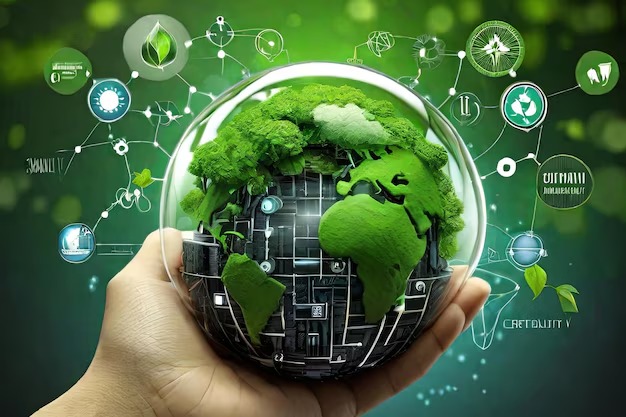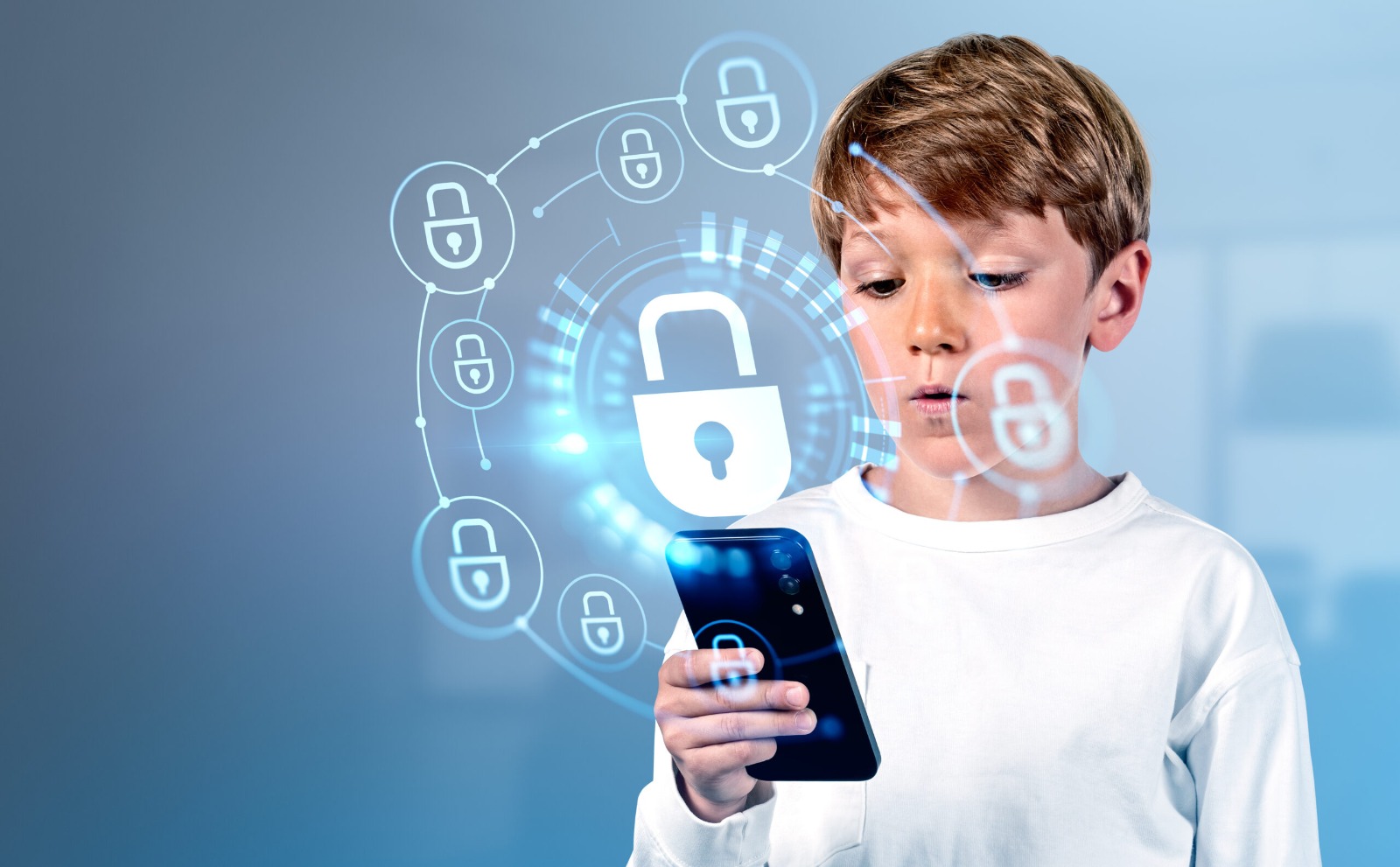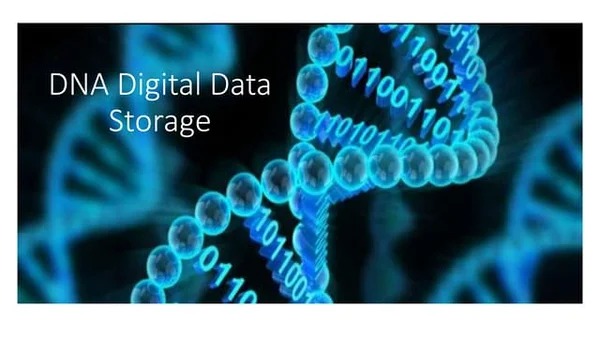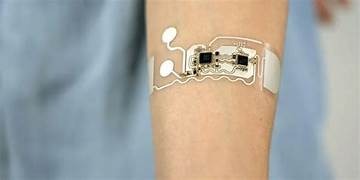
How IoT Is Integrating with Traditional Infrastructure Systems
The integration of IoT with traditional infrastructure systems is revolutionizing how cities and utilities function. From smart grids and buildings to waste and water management, IoT enables real-time monitoring, automation, and efficiency improvements. By embedding sensors and connected devices into conventional systems, governments and organizations can enhance decision-making, reduce costs, and offer better services to citizens.
✨ Raghav Jain

Introduction
In recent years, the Internet of Things (IoT) has revolutionized various industries, from healthcare and agriculture to manufacturing and transportation. But one of the most transformative changes is its integration with traditional infrastructure systems. These are the physical and organizational structures such as roads, bridges, water supply, power grids, and buildings that are the backbone of society. As cities grow and face the pressures of urbanization, climate change, and population expansion, combining IoT with legacy infrastructure is no longer optional — it’s a necessity.
This article explores how IoT is integrating with traditional infrastructure, what this means for governments, businesses, and individuals, and the opportunities and challenges that come with it. The Internet of Things (IoT) is rapidly and fundamentally reshaping the landscape of traditional infrastructure systems, moving beyond isolated, manually operated structures towards interconnected, intelligent, and automated networks. This integration is not merely about adding digital interfaces to existing physical assets; it represents a profound convergence where the physical and digital realms are becoming increasingly intertwined, leading to unprecedented levels of efficiency, resilience, sustainability, and responsiveness. Traditional infrastructure systems, encompassing vital sectors such as energy grids, transportation networks, water management facilities, and urban environments, have historically operated with limited real-time data and relied heavily on scheduled maintenance and reactive interventions. The advent of IoT introduces a paradigm shift by embedding a multitude of sensors, actuators, and communication technologies into these systems, enabling continuous monitoring, data collection, and remote control. This pervasive sensing layer generates vast amounts of data regarding the operational status, performance, and environmental context of infrastructure assets. This data, when analyzed and processed through sophisticated algorithms and cloud-based platforms, provides invaluable insights that can be leveraged to optimize operations, predict failures, enhance safety, and improve overall service delivery.
In the realm of energy infrastructure, IoT is revolutionizing how power is generated, distributed, and consumed. Smart grids, a prime example of this integration, utilize IoT devices such as smart meters, intelligent transformers, and grid sensors to create a more dynamic and efficient energy ecosystem. Smart meters provide granular, real-time data on energy consumption patterns, empowering both utilities and consumers to make informed decisions about energy usage and pricing. Intelligent transformers equipped with sensors can monitor their own health, temperature, and load, enabling proactive maintenance and preventing costly outages. Grid sensors deployed across the transmission and distribution network provide real-time visibility into power flow, voltage levels, and potential faults, allowing for rapid detection and isolation of problems, thereby enhancing grid stability and reliability. Furthermore, IoT facilitates the seamless integration of renewable energy sources, such as solar and wind power, into the grid by providing the necessary data and control mechanisms to manage their intermittent nature and ensure grid stability. Demand-side management programs, enabled by IoT, can incentivize consumers to adjust their energy consumption based on grid conditions, further optimizing energy use and reducing peak demand.
Transportation infrastructure is also undergoing a significant transformation through the integration of IoT. Smart transportation systems leverage connected vehicles, intelligent traffic signals, and sensor-equipped roadways to improve traffic flow, enhance safety, and reduce congestion. Connected vehicles, equipped with a variety of sensors and communication capabilities, can exchange data with each other and with the infrastructure, providing real-time information about traffic conditions, road hazards, and vehicle performance. Intelligent traffic signals, informed by real-time traffic data from sensors and connected vehicles, can dynamically adjust signal timings to optimize traffic flow and reduce travel times. Smart parking systems utilize sensors to detect vacant parking spaces and provide real-time availability information to drivers, reducing the time spent searching for parking and alleviating urban congestion. Furthermore, IoT plays a crucial role in public transportation by enabling real-time tracking of buses and trains, providing passengers with accurate arrival and departure information, and optimizing routes based on demand and traffic conditions. The integration of IoT with autonomous vehicles promises to further revolutionize transportation, enabling safer, more efficient, and more sustainable mobility solutions.
Water management infrastructure stands to gain immensely from the integration of IoT. Smart water systems utilize sensors deployed throughout the water distribution network to monitor water flow, pressure, and quality in real-time. This continuous monitoring allows for the early detection of leaks, which can lead to significant water loss and infrastructure damage. Remote-controlled valves and pumps, enabled by IoT, allow for rapid isolation of leaks and efficient management of water flow. Smart meters provide detailed data on water consumption, empowering both utilities and consumers to better manage water usage and detect anomalies that may indicate leaks within households or businesses. In wastewater treatment facilities, IoT sensors can monitor various parameters such as pH levels, dissolved oxygen, and chemical concentrations, enabling optimized treatment processes and ensuring compliance with environmental regulations. Furthermore, IoT can play a crucial role in managing water resources by monitoring reservoir levels, river flows, and groundwater levels, providing valuable data for informed decision-making regarding water allocation and drought management.
The integration of IoT into urban environments is giving rise to the concept of smart cities. Smart city initiatives leverage a wide range of IoT devices and applications to improve the quality of life for citizens, enhance urban efficiency, and promote sustainability. Smart lighting systems, equipped with motion sensors and connected to a central control system, can adjust their brightness based on pedestrian and vehicular traffic, reducing energy consumption and enhancing safety. Smart waste management systems utilize sensors in waste bins to monitor fill levels and optimize collection routes, reducing fuel consumption and improving sanitation. Environmental monitoring sensors can track air and water quality, providing valuable data for addressing pollution and improving public health. Smart buildings, equipped with IoT devices, can optimize energy consumption for heating, ventilation, and air conditioning (HVAC), as well as lighting and security systems. The integration of these various smart city applications through a common data platform enables a holistic and integrated approach to urban management, leading to more livable, efficient, and sustainable cities.
However, the integration of IoT with traditional infrastructure systems is not without its challenges. Cybersecurity is a paramount concern, as the interconnected nature of IoT devices creates a larger attack surface for malicious actors. Protecting critical infrastructure from cyber threats requires robust security measures, including encryption, authentication, and intrusion detection systems. Data privacy is another important consideration, as the vast amounts of data collected by IoT devices need to be handled responsibly and ethically, ensuring the privacy of individuals and organizations. Interoperability between different IoT devices and platforms is also a challenge, as a lack of standardization can hinder seamless data exchange and system integration. Addressing these challenges through the development of robust security protocols, data privacy regulations, and interoperability standards is crucial for realizing the full potential of IoT in transforming traditional infrastructure systems.
Furthermore, the successful integration of IoT requires significant investment in infrastructure upgrades, including the deployment of sensors, communication networks, and data processing capabilities. The skills gap in managing and analyzing the vast amounts of data generated by IoT devices also needs to be addressed through education and training programs. Moreover, organizational and cultural shifts are necessary within traditional infrastructure operators to embrace the data-driven decision-making and proactive maintenance practices enabled by IoT. Collaboration between government agencies, industry stakeholders, and technology providers is essential to foster innovation, develop standards, and overcome the challenges associated with this transformative integration.
In conclusion, the integration of IoT with traditional infrastructure systems represents a profound and ongoing transformation with the potential to deliver significant benefits across various sectors. By embedding intelligence into physical assets and enabling real-time data-driven decision-making, IoT is paving the way for more efficient, resilient, sustainable, and responsive infrastructure. From smart grids and intelligent transportation networks to smart water systems and smart cities, the applications of IoT are vast and continue to evolve. While challenges related to cybersecurity, data privacy, and interoperability need to be addressed, the transformative power of IoT to optimize and modernize our essential infrastructure systems is undeniable, promising a future where these systems are more intelligent, interconnected, and ultimately, better serve the needs of society. The continued advancement of sensor technologies, communication networks, and data analytics will further accelerate this integration, unlocking new possibilities and driving innovation in the way we design, operate, and interact with our critical infrastructure. This convergence of the physical and digital worlds is not just a technological evolution; it is a fundamental shift towards a more intelligent and sustainable future for our infrastructure and the communities they serve.
Understanding Traditional Infrastructure Systems
Traditional infrastructure refers to long-established, large-scale public systems and facilities that are essential for a country's economy and quality of life. These include:
- Transportation systems (roads, railways, airports)
- Utility networks (electricity grids, water pipelines, gas supply)
- Public buildings and spaces (schools, hospitals, municipal offices)
- Communication lines (telephones, broadband cables)
- Waste management systems
Most of these systems were designed decades ago and rely on manual operations, static schedules, and outdated technology. As a result, they are often inefficient, expensive to maintain, and unable to adapt quickly to changes or disruptions.
What is the Internet of Things (IoT)?
IoT refers to a network of interconnected devices that collect, exchange, and act upon data using embedded sensors, software, and other technologies. These devices can be anything from smart thermostats in homes to sensors in traffic lights or pipelines. The real power of IoT lies in its ability to analyze real-time data and trigger automated responses, improving efficiency, safety, and decision-making.
Why Integrate IoT with Traditional Infrastructure?
Traditional infrastructure systems, while foundational, have limitations. Here's why IoT integration is so beneficial:
- Real-time monitoring: Sensors can track performance and conditions continuously.
- Predictive maintenance: IoT can forecast failures before they happen, reducing downtime.
- Data-driven decision-making: Authorities can plan and allocate resources more effectively.
- Automation: Systems can adjust automatically to improve efficiency (e.g., traffic lights adjusting to flow).
- Energy and cost savings: Efficient usage cuts down on waste and operational costs.
By combining the physical reliability of traditional infrastructure with the intelligence of IoT, we get smart infrastructure — systems that learn, adapt, and respond dynamically.
Key Areas Where IoT is Integrating with Infrastructure
1. Smart Transportation Systems
Modern cities face severe traffic congestion, increasing pollution, and safety issues. IoT enables smart transportation solutions such as:
- Intelligent traffic management: Sensors and cameras collect traffic data to optimize signal timings and reduce congestion.
- Smart parking: IoT devices guide drivers to available parking spots, reducing time and fuel wastage.
- Vehicle-to-Infrastructure (V2I) communication: Connected vehicles interact with road infrastructure to improve safety and navigation.
- Predictive maintenance for public transport: Monitoring systems on buses and trains can detect faults before breakdowns occur.
Example: Barcelona uses IoT sensors for dynamic traffic lights, reducing waiting time and improving traffic flow across the city.
2. Smart Energy Grids
IoT is helping to modernize aging power grids into smart grids that are more reliable and efficient.
- Smart meters: These provide real-time energy usage data to both consumers and utility providers.
- Automated distribution: The system can reroute electricity in case of faults or overloads.
- Integration with renewable energy: IoT enables better load balancing when solar and wind energy is fed into the grid.
- Energy forecasting: Using consumption patterns and weather data, utilities can predict and manage energy demand.
Example: In the U.S., many states use smart grid technology to prevent blackouts and better manage peak energy loads.
3. Water and Waste Management
Water scarcity and pollution are major global issues. IoT helps manage water and waste systems effectively:
- Leak detection: Sensors can locate pipeline leaks in real-time, preventing water loss.
- Smart irrigation: IoT-based systems water plants based on soil moisture and weather conditions.
- Waste bin sensors: These alert sanitation departments when bins are full, optimizing collection routes.
- Water quality monitoring: Sensors in reservoirs or pipelines ensure safe water supply by detecting contaminants.
Example: Singapore’s Public Utilities Board uses smart sensors to monitor water quality and detect leaks in underground pipes.
4. Building Automation and Smart Cities
IoT is transforming both residential and commercial buildings into smart environments:
- Smart lighting and HVAC: Adjustments are made automatically based on occupancy and weather, reducing energy use.
- Security and access control: Surveillance systems and smart locks enhance safety.
- Emergency response: Fire detection and alarm systems integrated with emergency services for rapid response.
- Integrated city dashboards: Municipalities can monitor infrastructure health, crime rates, weather, and traffic from one platform.
Example: Dubai’s Smart City initiative uses IoT to monitor roads, lighting, weather conditions, and municipal services in real-time.
5. Bridges, Roads, and Structural Health Monitoring
IoT sensors embedded in roads and bridges help engineers monitor structural integrity:
- Stress and vibration sensors: Monitor wear and tear or damage due to natural disasters.
- Temperature and moisture sensors: Prevent freeze-thaw damage by triggering timely interventions.
- Traffic counters: Help in planning expansions or repairs.
Example: The Golden Gate Bridge has been fitted with sensors that detect stress and corrosion, helping prolong its lifespan.
Challenges in IoT and Traditional Infrastructure Integration
While the benefits are substantial, there are several challenges that come with integrating IoT into traditional infrastructure:
1. High Initial Costs
Upgrading legacy systems with IoT devices requires significant investment. This includes hardware installation, software development, and staff training.
2. Data Privacy and Security
IoT networks are vulnerable to cyberattacks. Ensuring the safety of critical infrastructure data is paramount.
3. Compatibility and Standardization
Many traditional systems are outdated and may not be compatible with modern IoT devices. Lack of universal standards can also cause interoperability issues.
4. Maintenance and Scalability
Once installed, IoT systems need regular maintenance and updates. Scaling from pilot projects to city-wide deployment is complex.
5. Resistance to Change
Government bodies and traditional industries may resist adopting new technologies due to fear of disruption or lack of technical knowledge.
Emerging Technologies Enhancing IoT Integration
Several emerging technologies are helping smooth the integration of IoT into infrastructure:
- 5G Networks: Faster, low-latency connections enable real-time communication between devices.
- Edge Computing: Reduces the need to send all data to the cloud by processing information closer to the source.
- Artificial Intelligence (AI): Helps in data analysis, pattern recognition, and predictive maintenance.
- Blockchain: Ensures secure and transparent data exchange between IoT devices.
Case Studies: Real-World Implementations
1. Smart City Amsterdam
Amsterdam integrates IoT in waste management, traffic monitoring, and smart buildings. Citizens can also access public data to co-create solutions.
2. Songdo, South Korea
This planned city was built with IoT embedded into every corner — from smart roads and buildings to automated waste collection and water reuse.
3. Chicago’s Array of Things Project
A network of sensors installed across the city collects data on air quality, temperature, and noise levels to improve urban planning.
The Future of Infrastructure and IoT
Looking ahead, we can expect the following trends:
- Fully autonomous public services: Like self-regulating traffic, waste, and energy systems.
- Digital twins: Virtual replicas of infrastructure for simulation and planning.
- Green IoT: Systems optimized for sustainability and minimal environmental impact.
- Public-private collaborations: More partnerships to fund and manage smart infrastructure projects.
As technologies like AI, robotics, and quantum computing advance, IoT-enabled infrastructure will become even more intelligent, resilient, and responsive.
Conclusion
The integration of IoT with traditional infrastructure is ushering in a new era of smart, efficient, and responsive public systems. From managing traffic and energy to ensuring clean water and secure buildings, IoT is transforming the very backbone of modern civilization. However, this transformation comes with challenges — from cost and compatibility issues to privacy concerns — that must be addressed through careful planning and collaboration.
As more cities and nations adopt IoT-driven infrastructure, the way we interact with our environment will continue to evolve. Ultimately, smart infrastructure powered by IoT holds the potential to create safer, more sustainable, and livable communities for generations to come.
Q&A Section
Q1: What is the Internet of Things (IoT)?
Ans: The Internet of Things (IoT) is a network of interconnected devices that collect and exchange data through the internet, enabling smarter monitoring, control, and automation of systems.
Q2: How is IoT being integrated into traditional infrastructure systems?
Ans: IoT is integrated into traditional infrastructure by embedding sensors and connected devices into roads, buildings, power grids, and water systems to improve efficiency, maintenance, and performance.
Q3: What are the benefits of using IoT in public transportation systems?
Ans: IoT enhances public transportation by enabling real-time tracking of vehicles, predictive maintenance, traffic management, and providing commuters with live updates and safer journeys.
Q4: How does IoT contribute to smart energy grids?
Ans: IoT helps smart energy grids by monitoring energy usage, detecting faults, managing loads, and integrating renewable sources, leading to reduced outages and better energy distribution.
Q5: In what ways is IoT used in building infrastructure?
Ans: IoT in building infrastructure is used for automated lighting, HVAC control, security systems, energy consumption tracking, and enhancing occupant comfort through smart technologies.
Q6: How does IoT improve water management in cities?
Ans: IoT improves urban water management by monitoring water levels, detecting leaks, optimizing irrigation, and tracking water quality to reduce waste and ensure sustainability.
Q7: What role does IoT play in waste management systems?
Ans: IoT-enabled waste management uses smart bins and route optimization to monitor fill levels, improve collection efficiency, reduce fuel consumption, and maintain cleaner cities.
Q8: How is IoT applied in road and traffic infrastructure?
Ans: IoT supports smart traffic lights, real-time traffic monitoring, congestion detection, and accident alerts, helping reduce travel time and improve road safety.
Q9: What challenges arise in integrating IoT with existing infrastructure?
Ans: Key challenges include high implementation costs, outdated legacy systems, data privacy concerns, and the need for skilled personnel to manage IoT networks.
Q10: What is the future potential of IoT in infrastructure development?
Ans: The future of IoT in infrastructure promises fully automated, self-monitoring systems that improve urban living, reduce operational costs, enhance public services, and support sustainability.
Similar Articles
Find more relatable content in similar Articles

Data Centers and the Planet: M..
As cloud computing becomes the.. Read More

Protecting Kids in the Digital..
In an increasingly connected w.. Read More

Digital DNA: The Ethics of Gen..
Digital DNA—the digitization a.. Read More

Wearable Health Sensors: The D..
Wearable health sensors are re.. Read More
Explore Other Categories
Explore many different categories of articles ranging from Gadgets to Security
Smart Devices, Gear & Innovations
Discover in-depth reviews, hands-on experiences, and expert insights on the newest gadgets—from smartphones to smartwatches, headphones, wearables, and everything in between. Stay ahead with the latest in tech gear
Apps That Power Your World
Explore essential mobile and desktop applications across all platforms. From productivity boosters to creative tools, we cover updates, recommendations, and how-tos to make your digital life easier and more efficient.
Tomorrow's Technology, Today's Insights
Dive into the world of emerging technologies, AI breakthroughs, space tech, robotics, and innovations shaping the future. Stay informed on what's next in the evolution of science and technology.
Protecting You in a Digital Age
Learn how to secure your data, protect your privacy, and understand the latest in online threats. We break down complex cybersecurity topics into practical advice for everyday users and professionals alike.
© 2025 Copyrights by rTechnology. All Rights Reserved.